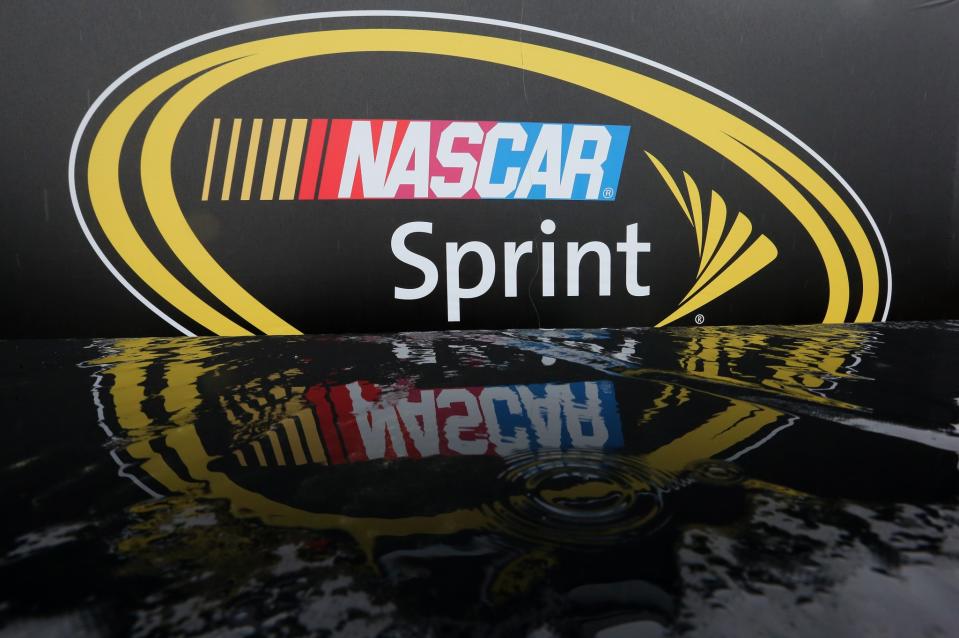As stars depart, NASCAR navigates a future of change

As NASCAR comes down from the high of a record-tying seventh championship from the sport’s greatest driver, it descends into a reality of declining interest. And a reality that includes a sponsorless Cup Series.
With the 2016 season complete, there’s no replacement lined up for Sprint, the series’ departing title sponsor since 2008 after a merger with Nextel.
NASCAR made Nextel’s 2004 arrival in the sport official in July of 2003. While it became clear over the summer that NASCAR wasn’t going to be able to be as officially proactive as it was with Nextel, it’s a search that the sanctioning body hoped to have wrapped up by now.
“It’s taken a little longer than I thought, but it’s also a big agreement and an important agreement,” NASCAR chairman Brian France said Sunday. “It’s not just dollars and cents, but it’s a fit for us. … We’re in a good spot with that, I believe, but we’ll have to see how it finally plays out.”
It’s even forced teams, who typically do photoshoots and make other arrangements for the upcoming season in the fall, to leave the space for the new Cup Series logo blank where necessary.
Monster Energy Drink, partially owned by Coca-Cola, has been mentioned as a possible finalist for the title sponsorship. Monster currently sponsors the Supercross indoor bike racing series and NASCAR would love to have the broad appeal to younger fans who love Supercross.
But here’s where the whole “fit” thing comes in that France mentions. Can you really go from the Sprint Cup — a name that worked well because of the racing connotations of the telecommunications provider’s name — to the Monster Cup? The Monster Cup sounds like what you get at Burger King when you upsize your value meal.
NASCAR has been chasing after younger fans for years, given the age of its current fanbase. According to a 2014 survey published in the Atlantic, 49 percent of NASCAR fans were older than 55 and 37 percent of fans were between the ages of 35-54. Doing that math, that leaves just 14 percent of the fanbase younger than 34 years old.
It’s why the series has tried so hard to market its younger stars like Chase Elliott, Kyle Larson and now Daniel Suarez, who won the Xfinity Series title on Saturday. Suarez’s win makes him the first non-American winner in NASCAR’s top three divisions.
The success and marketability of younger drivers is increasingly important by the month as the stars that helped carry NASCAR towards the front of the sports landscape wind down their driving careers. Four-time champion Jeff Gordon (un)officially retired at the end of 2015 and three-time champion Tony Stewart drove a Sprint Cup car for the final time on Sunday.
And 42-year-old Dale Earnhardt Jr., the sport’s most popular driver since his father’s death in 2001, missed half of the 2016 season because of a concussion and likely won’t be driving for another 10 years.
International Speedway Corporation, founded by NASCAR founder Bill France over 50 years ago, said in October on an earnings call that advance ticket sales were down for Chase races at its tracks by approximately 10 percent.
If you’ve looked at the grandstands while watching races on TV, that’s not a surprise. Grandstands that were once full, or close to it, had lots of empty seats. While NASCAR likes to tout the size of its facilities as a reason empty seats may be exaggerated — while also no longer officially reporting attendance figures — it’s impossible to argue attendance hasn’t declined.
“Attendance has been fine,” France said. “We’ve come off weather issues like we did in Phoenix a year ago [when the race was delayed]. We don’t have Jeff Gordon and Dale Earnhardt. Needless to say, there’s going to be a little impact there.”
But any sport should be bigger than its stars, right? NASCAR’s popularity surged following Dale Earnhardt Sr.’s death in 2001. And given that Gordon raced for Junior eight times in 2016, the sport was without the two for just 10 of its 36 points races.
Like attendance, TV ratings have also declined too. Sunday’s race was down 25 percent from the final race of 2015, though that race was Gordon’s big sendoff and also ended on NBC as Football Night in America was about to begin because of a rain delay. It’s not a direct comparison, but it’s a symbol for the decline of the sport’s ratings across the board. All but one of the 10 Chase races had double-digit ratings drops from 2015 (or a non-rain-delayed race in 2014).
The one that didn’t — Kansas — suffered a nine percent decline. And it was the lowest-rated NASCAR race on broadcast television since 2004. It’s a good thing the sanctioning body still has eight years on a $4-plus billion television deal it signed with Fox and NBC before the 2014 season.
Highlight appeal was a large reason why NASCAR added eliminations to the Chase in 2014. With three-race rounds leading up to a one-race winner-take-all finale, NASCAR wanted to replicate the season-ending drama of the 2011 Chase that Tony Stewart won over Carl Edwards in a tiebreaker.
And so far, it’s gotten those moments, including the crazy restart accident involving Carl Edwards and Joey Logano late in Sunday’s race. But it’s fair to wonder if NASCAR’s becoming over-reliant on the highlight or even if the elimination-style format is appealing to fans.
If it was, wouldn’t there be a spike in people watching both at the track and live elsewhere?
“Number two, we are still very pleased with our position in sports,” France said, pointing to ratings dropoffs other sports like the NFL have seen recently. “The audience isn’t going away at all. It’s sliding to different places, consuming in different ways.
“I would tell you some other leagues that have 30-percent drop‑offs, they didn’t lose 30 percent of their audience from one moment to the next. That audience is just sliding and consuming in some different ways. Our digital consumption is off the charts.”
France is right that digital consumption has increased; it’s not relative to the rate of lost viewers on television. The context is important. A television ratings point is worth about a million households.
2016 consumption of NASCAR content via https://t.co/Wt1EFRelpV & app has earned 97M minutes & 802K uniques up 56% & 54% respectively vs 2015
— NBC Sports PR (@NBCSportsPR) November 14, 2016
France touted the Chase format for producing “better racing” in the Xfinity and Truck Series relative to before it was implemented. But while points resets add a layer of drama, that drama is explicitly and blatantly manufactured. And drivers, fans and NASCAR know it.
But while NASCAR is clearly married to the current Chase format, it’s also worth considering if NASCAR has become too over-reliant on moments, whether it be from the format or the seemingly weekly late-race restarts that can change the complexion of a race or a season.
Just think of how different the championship would be if Matt Kenseth hadn’t crashed out for the lead at Phoenix or if Logano and Edwards would have gotten through Turns 1 and 2 after the restart cleanly. Even the normally uncontroversial Edwards went as far as to publicly plead for the legitimacy of the caution that set up his championship-robbing moment.
The setup for moments at the end of the season minimizes drama for the first 26 weeks of the season. That’s a big reason why France said a regular-season bonus for the best driver before the Chase will be considered in the offseason.
And given that NASCAR has changed the Chase every three years since it started the title format in 2004, it’ll be more surprising if it left the Chase alone for 2017. While we don’t know what the changes will be for NASCAR as it navigates a post-Gordon and Stewart world, we know they’re coming. Change is NASCAR’s one constant.
“Would I obviously like to have, you know, everything perfect? Of course, I would,” France said. “But that’s sports. That’s a competitive business. The model is changing a little bit, too, maybe not even in a way that we wouldn’t like to see. We’re pleased with the health of the sport.”
– – – – – – –
Nick Bromberg is the editor of From The Marbles on Yahoo Sports. Have a tip? Email him at nickbromberg@yahoo.com or follow him on Twitter!



